At 5:17 p.m. on Sunday, May 22, 2011, tornado sirens sounded.
A veil of rain disguised the EF5 tornado bearing down on Joplin, Missouri.
As the storm made its way across the city, it ripped a path of destruction nearly a mile wide. The slow-moving storm became more destructive as it stalled for several minutes gaining wind speeds of more than 200 miles per hour on top of St. John’s Hospital and Cunningham Park.
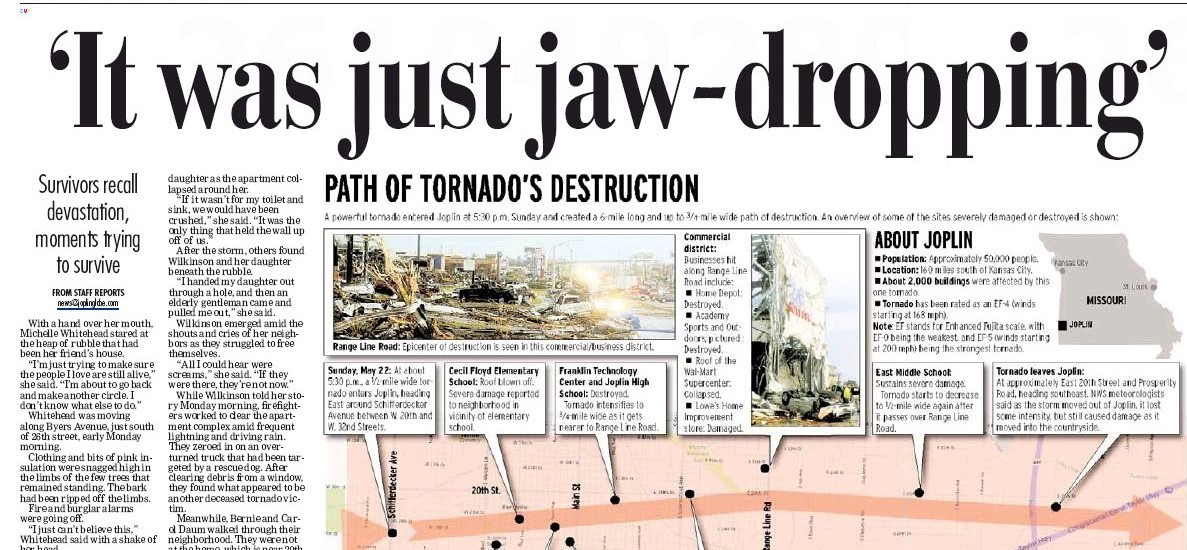
When the storm finally passed, the five-story, concrete hospital was rendered unstable and the park, once filled with 100-year-old trees, was unrecognizable.
The storm and the deadly debris cloud that began on the western edge of Joplin was slow to dissipate and continued on to the town of Duquesne and into Jasper and Newton counties, a total of 22.1 miles over 38 horrific minutes.
161 people died.
Ground Zero: Joplin’s First City Park
Established at the turn of the 20th century, Cunningham Park had become a vibrant center for the Joplin community with fountains, flowers, swimming pool and bandstand. The Park was surrounded by historic houses — all flattened by the tornado.
Volunteers flooded the area – estimated at roughly 177,000 individuals who contributed some 1,150,000 hours of service. Among those volunteers were students, faculty and staff from Drury University. Over the next three years, Drury University faculty, staff and students contributed more than 12,000 hours of volunteer service to the Joplin community.
Rebuilding the Park, Restoring Community Spirit
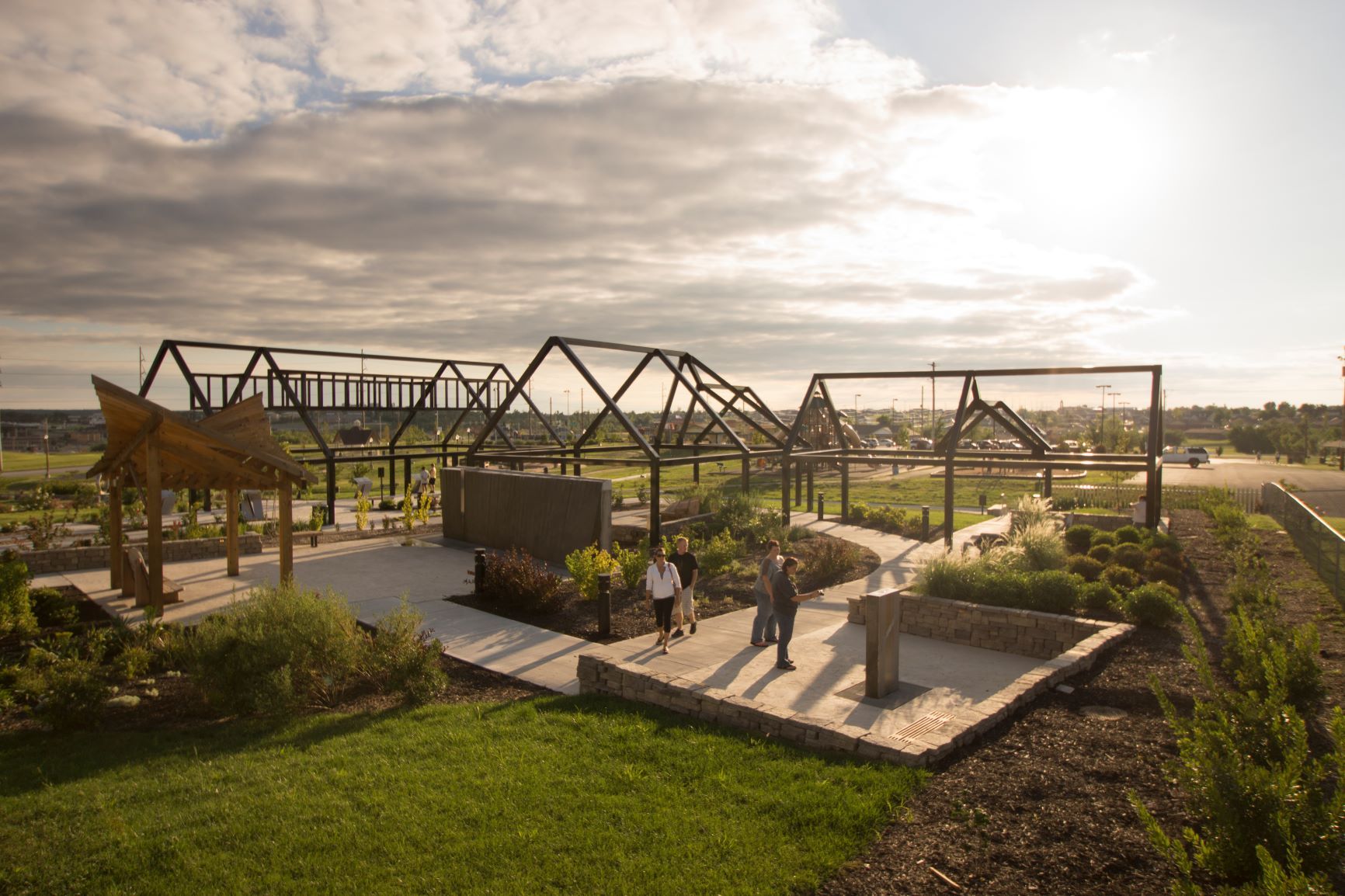
Memorial GardenPhoto by Evan Melgren
Joplin residents asked the Drury Design-Build program to design and construct a tribute to the volunteers that came to the aid of their community. As a studio project, third-year students envisioned and created a garden, emblematic of the “Miracle of the Human Spirit.”
Mobilizing the Drury Community
Organizers used a variety of social media tools, including posts inviting students, faculty and staff to participate in a day of service — a SmartMob. The first SmartMob! – 120 strong – laid 26,000 square-feet of sod in fewer than 45 minutes, then went beyond their “assignment” and installed sod in the rest of the 6-acre park.
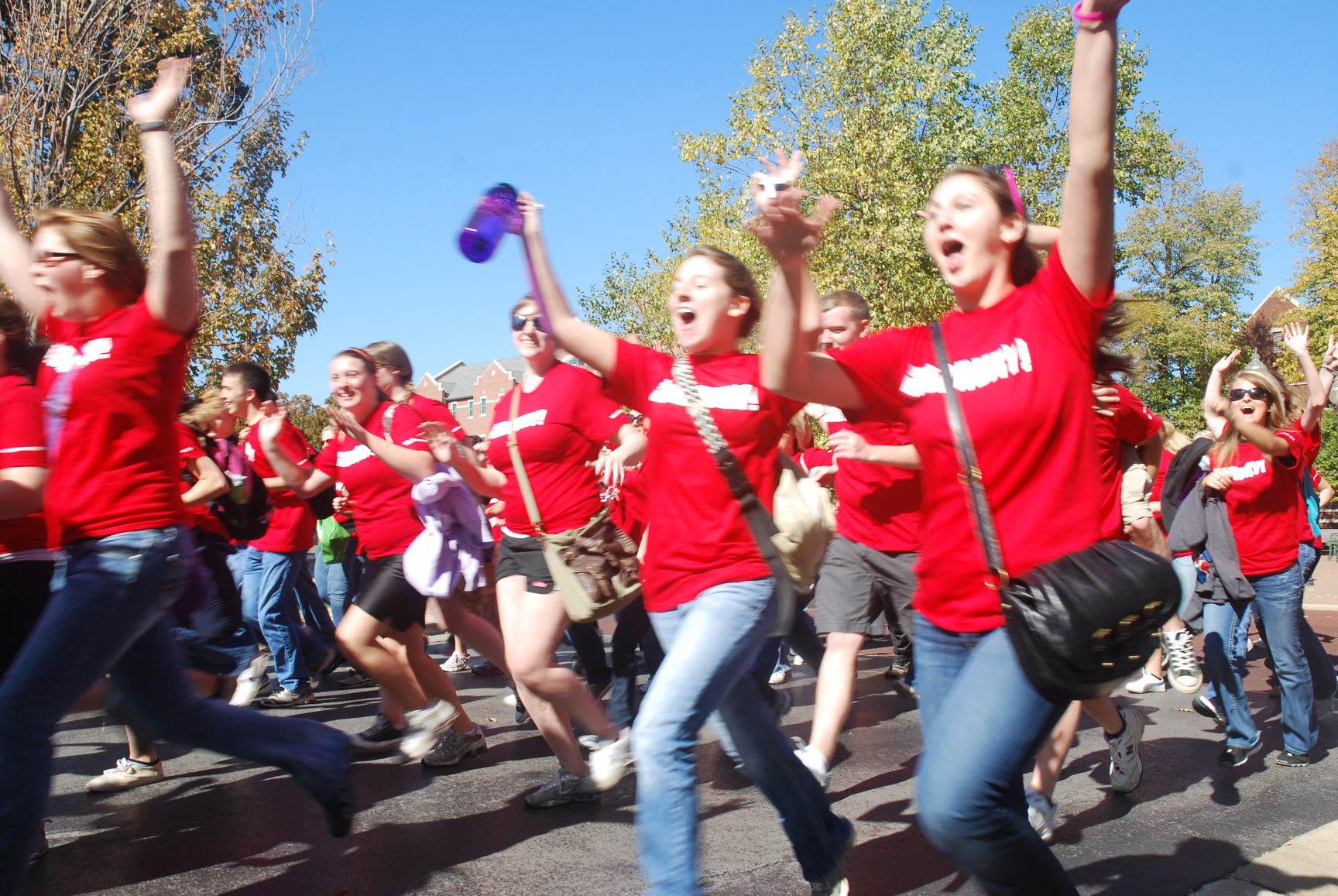
Drury University Flash MobPhoto by Mark Miller
A second SmartMob! helped build stone walls at the Butterfly Garden and Overlook – serenaded by 20 music therapy students who provided a “rejuvenation station.”
While Drury was creating the memorial, butterfly garden and overlook, a team from the ABC reality show “Extreme Makeover: Home Edition” pitched in and committed to rebuild a neighborhood of seven houses in seven days – 168 hours with continuous, round-the-clock work. They did it.
Nature in the City: Sacred, Spiritual, Healing
In 2013, funding from the TKF Foundation offered students an opportunity to create a place within nature where Joplin residents could heal from the loss of a loved one, home, job, and sense of security or community as a result of the tornado. At the Butterfly Garden and Overlook, the four sacred destinations have benches with journals. The grant provider furnishes a bench, which is built by inmates. According to TKF, the bench “is place of respite that invites one to pause and reflect. More than just a place to sit, the presence of a Bench in an Open Space Sacred Place is an invitation to pause on one’s journey—to sit, to rest, to breathe, to be present, to experience all the gifts that an Open Space Sacred Place has to offer.”
I remember May 22 like it was yesterday. I remember the heartache felt. This park brought a sense of peace and healing.
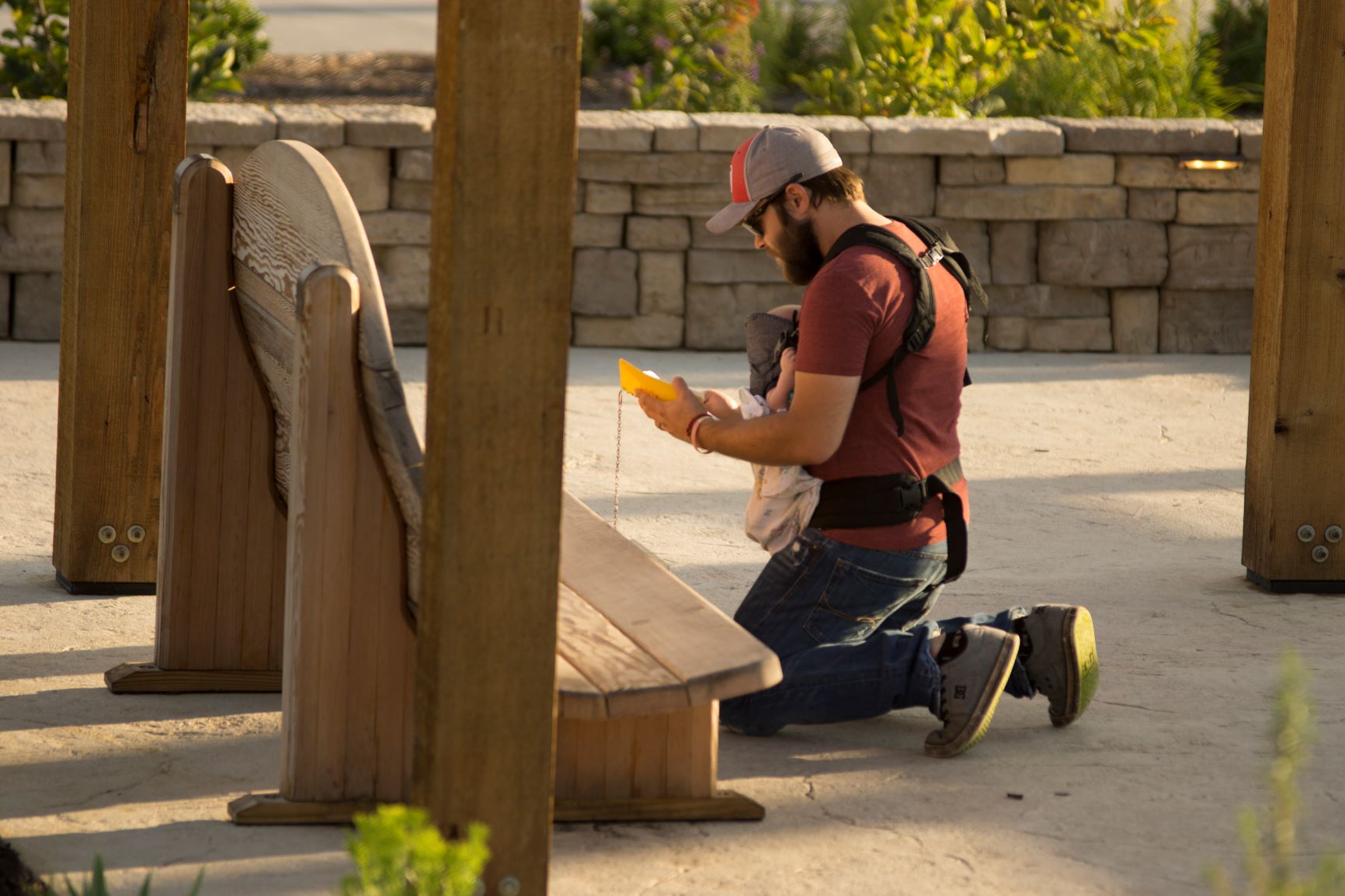
Recalling MemoriesPhoto by Evan Melgren
The Third Place
The Park, the Healing Garden and the frames of the neighboring houses have become Joplin’s “third place” where residents find psychological comfort, ease and spiritual relief. On the sixth month anniversary, 161 trees were planted alongside a small memorial that displayed the 161 names of the victims of the tornado.
Boston Globe correspondent Juliette Kayyem wrote about the Walk of Unity: “Joplin isn’t just a story of hope winning over pessimism. What makes Joplin a truly American story is that its transformation is a triumph of local ingenuity, starting with the most democratic of events: a public meeting.”
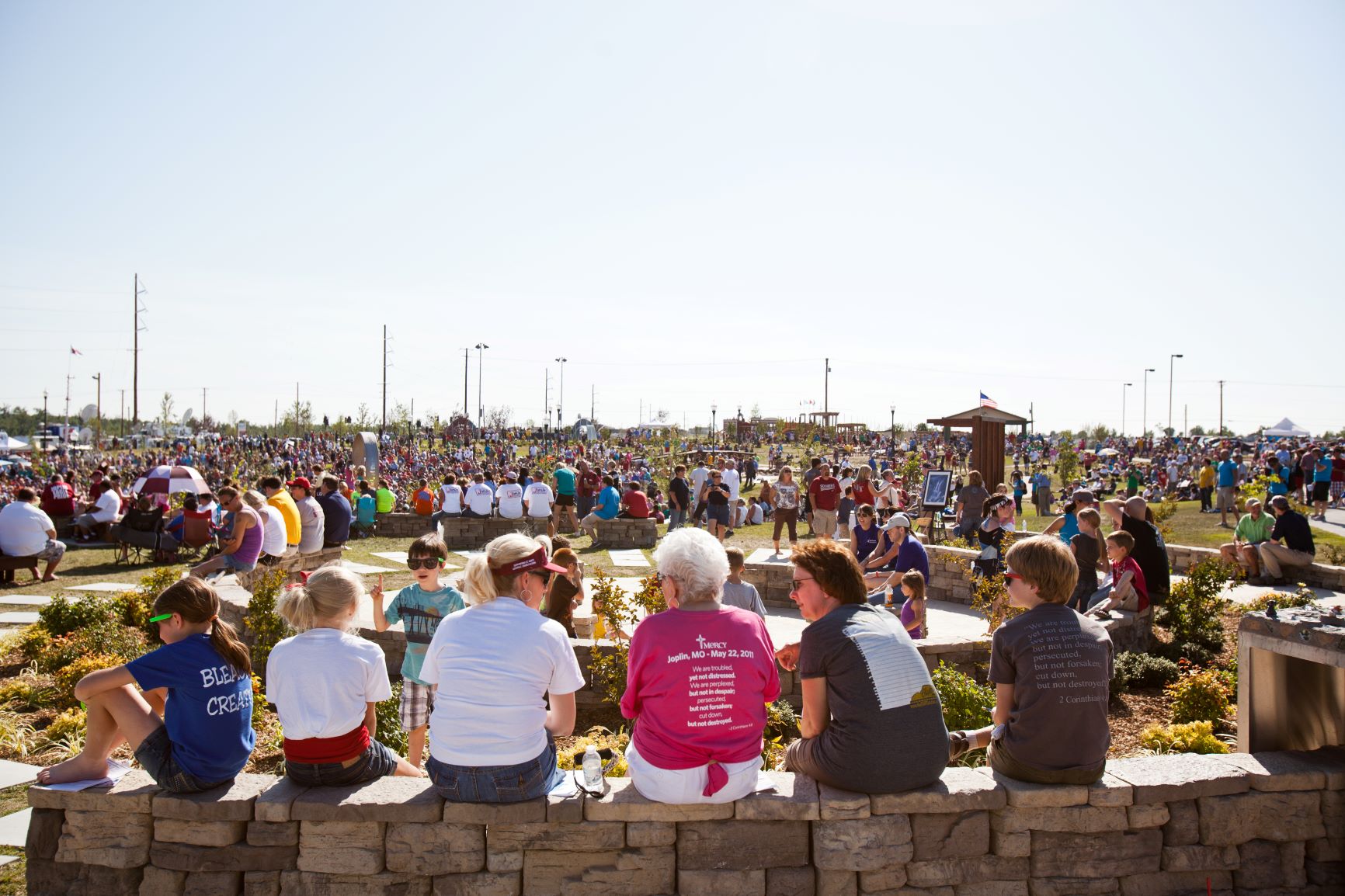
Funding
TKF Foundation
Partners
City of Joplin
ABC Broadcasting, “Extreme Makeover: Home Edition”
Women’s Park Association
Lessons Learned
- After disaster, people from across the world will show up to help, some will stay for months, some will stay indefinitely. These groups tend to be very dedicated and reliable.
- The combined, sustained efforts of volunteers, professionals and city officials are necessary for success in the four stages of disaster recovery (search and rescue, debris removal, demolition, and rebuilding).
- The successful rebirth of the community rested on many shoulders — most important, the citizens who picked themselves up out of the rubble and their constant articulation of gratitude for the volunteers.
- Re-greening soon after disaster gave community members relief from the drab rubble left after debris removal.
- Archiving and displaying stories of heroism, symbolic spiritualism, and storm facts helps heal the community.
- Place attachment became an important factor in healing. Many community members mentioned “missing” the iconic Owen “airplane window house.” Creating the outline of the home gave community members an enduring connection to the past to allow them to move forward, but not forget.
- Shards of debris became representative of people’s lives. Reconfiguring the debris in a meaningful way (butterfly mosaic and in storyboard pedestals) gave peace to some, was embraced by many and became an important element in emphasizing the impact of the storm on people’s lives.
- Survivors need to tell their stories. Listen, remember, share, and respond through design. Butterfly stories were important to survivors and were memorialized on signs, murals and were welcomed in the two Drury projects.
- Create an enduring connection to what was lost, as outlined in William Worden’s fourth and final step of the grieving process. This could be a landmark, a symbol, or in the case of Joplin, the outlines of three homes in Cunningham Park which represent the 5,000 homes lost across the community, or shards of debris becoming a butterfly mosaic.

